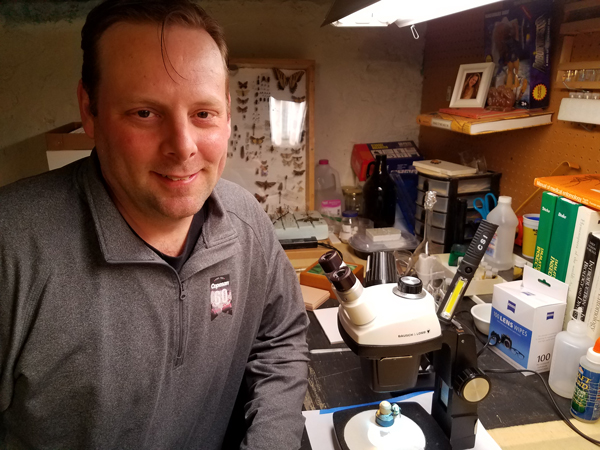
Nathan Hall, BCE, Quality and Training Specialist at Wil-Kil Pest Control
If you are in the pest control industry long enough, you will eventually get called out to inspect for bed bugs. The client will be certain they have bed bugs. They will tell you how they woke up in the morning with mysterious bites that are in a line or a large group or just one here and there. The client looked up what bed bug bites look like online, and sure enough, it just must be bed bugs! Does this sound familiar?
You know as a pest control professional that you can’t say for certain if those marks are bug bites, much less bed bug bites, so you thoroughly inspect the client’s home and find no signs of bed bugs. So, what’s causing the bites?
There are a few causes for bug-bite-like marks that I’ve found over the years that have nothing to do with bed bugs. The three main culprits for these types of bites are dermestid beetles, mosquitoes and the interior environment.
Dermestid beetles
If the client has pets or doesn’t vacuum the cracks and crevices at carpet edges thoroughly, I start looking for dermestid beetles. If I find dermestid beetle adults or larvae, especially in the bedroom, I have a pretty good idea of what’s causing the bites. Dermestid beetle adults and larvae do not actually bite, so that’s not it … but the larvae do have urticating hairs on their bodies that often fall off and, if in bedding, will get embedded in human skin. These urticating hairs can be very irritating to skin and can cause the skin to react with itchy welts and redness.
Mosquitoes
When the seasons start changing from autumn to winter, another possible culprit for bites in the home is mosquitoes. Mosquitoes will overwinter as adults in attic spaces, basements and soffits, as these areas stay somewhat humid and reasonably warm. Even some outdoor locations make good overwintering spots that allow mosquitoes to enter unintentionally. This may sound hard to believe, but even I’ve encountered this, and it was as late as November in Wisconsin.
Once I was called into an inspection at a ground level apartment for bed bugs. The client had been waking up with bites. After finding no signs of bed bugs and exhausting all possible areas in my search, I noticed an open window in the bedroom. The room had radiant heat and the client mentioned the room would get over-heated so he would keep the window open to regulate the temperature. When I inspected the window further, I found the screen had a large hole in it and the window had a small overhang just above it with overwintering mosquitoes perched under it. I was able to conclude that on the warmer days, the mosquitoes were waking up and flying in through the hole in the screen. After patching the hole, the bites stopped appearing.
Interior environment
Seasonal changes can also lead to changes in the interior environment of many homes. As a result, the most common reason I get called out to do a bed bug inspection due to bites, is simply dry skin. Dry skin issues often result in hives, rash or itchiness and small welts. With seasonal changes, indoor temperatures and humidity changes can dry out skin quickly and cause all sorts of discomfort, especially for people with sensitive skin. Of course, I’m not a dermatologist so I can never say for certain, but it’s something I can suggest to a client when they want answers after an inspection that comes up dry. Other causes of similar skin irritation can be a change in laundry detergent or soap, changes in medication or an allergic reaction to other external stimuli.
While there are countless possible causes of bites, I’ve found these are the most common scenarios when the mysterious bites aren’t from bed bugs. However, it is important to always put effort into inspecting for bed bugs first if that is what the client thinks it may be. Just remember, if the search comes up short, never underestimate the effects other pests can have on clients. This will help during your next great quest to identify the reason for mysterious bites!
Editor’s note: Read more about mysterious bites from Dr. Doug Mampe
Nathan Hall is a quality and training specialist at Wil-Kil Pest Control. He is a Board-Certified Entomologist (BCE), has a bachelor of natural sciences degree in the field of entomology from the University of Wisconsin-Madison. He has numerous certifications in the pest management industry, including the Wisconsin Pest Control Association Master Technician certificate, a top pest control certificate in Wisconsin. He is also certified in six pest control categories through the Wisconsin Department of Agriculture.
*FEATURED PHOTO: ISTOCK.COM/SHAYNEPPL
Leave A Comment